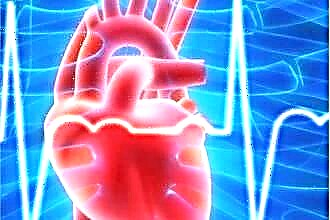The defining symptom of angina is inflammation of the tonsils and the associated phenomena of intoxication. Another important sign that characterizes this pathology is pain in the throat. Due to the fact that, due to their age, not all children can express their complaints, it is important to study the entire complex of symptoms.
However, a number of other pathological conditions are also accompanied by the development of these signs. In this case, the course of diseases, prognosis, therapeutic measures can differ significantly, depending on the specific pathological process. Therefore, it is very important to prescribe the correct treatment is to clarify the diagnosis of angina.
General signs of the disease
Taking into account the morphological changes occurring in  tonsils, the clinical signs of a sore throat may be somewhat different. Depending on the nature of the inflammatory process, several forms of the disease are distinguished. The general symptoms of a sore throat in a child are as follows:
tonsils, the clinical signs of a sore throat may be somewhat different. Depending on the nature of the inflammatory process, several forms of the disease are distinguished. The general symptoms of a sore throat in a child are as follows:
- acute development of the disease;
- an increase in body temperature up to 39 degrees;
- the presence of a sore throat;
- an increase in the size of the tonsils;
- hyperemia of the tonsils;
- the presence of various plaques on the tonsils, due to the nature of the inflammatory process and the depth of the lesion;
- an increase in regional lymph nodes, their pain on palpation;
- the duration of the disease is within 7 days.
The first signs of angina in children are more often observed against the background of acute respiratory viral infections, when the condition worsens, there is a sharp malaise, chills, the development of hyperthermia is noted. Younger children refuse to eat, older children report a lack of appetite. However, in older children, angina can also be an independent pathology that develops when a child comes into contact with an infected patient. In this case, the phenomena of intoxication are accompanied by a sore throat, aggravated by swallowing and radiating to the ear or neck.
Constant symptoms of angina in children are an increase in regional lymph nodes. On palpation, their compaction and soreness are noted.
On an objective examination, the symptoms of angina in a child are characterized by hyperemia of the face and lips, dry skin, and seizures may occur in the corners of the mouth.
Depending on the involvement in the process of a particular tissue of the tonsils, a sore throat in a child is
- Catarrhal;
- Purulent;
- Necrotic.
For each form of angina, a certain nature of the pathological changes occurring in the tonsils is typical. These changes can be detected using pharyngoscopy, that is, a visual examination of the pharynx with a spatula and artificial lighting.
Signs of catarrhal sore throat
 Catarrhal angina has the most favorable course. In this case, the phenomena of intoxication are less pronounced than with other forms. In adults, the disease can occur even at low-grade fever. For children, its rise to 38 degrees is typical.
Catarrhal angina has the most favorable course. In this case, the phenomena of intoxication are less pronounced than with other forms. In adults, the disease can occur even at low-grade fever. For children, its rise to 38 degrees is typical.
Pharyngoscopy allows you to detect hyperemia, swelling of the mucous tonsils, the absence of plaque. In this case, the posterior wall of the pharynx and the soft palate are not changed. There is a slight increase and soreness when feeling the lymph nodes along the anterior surface of the neck, in the region of the lower jaw or its corner.
In the general analysis of blood, an increase in ESR up to 15 -18 mm / h is noted. The duration of the course of this form of the disease does not exceed 5 days. With incorrect and untimely treatment, catarrhal tonsillitis can transform into a purulent form.
Characteristics of purulent sore throat
Depending on morphological changes, purulent tonsillitis is divided into follicular and lacunar. The general symptoms of purulent sore throat in children are as follows:
- pronounced symptoms of intoxication;
- involvement in the process of not only the mucous membrane of the tonsils, but also the follicular tissue;
- the presence of sharp pain and an increase in the size of regional lymph nodes.
For children with this course of the disease, intoxication comes to the fore. The child is lethargic, weak. Headache is noted, there may be back pain. High hyperthermia in children is often accompanied by nausea and vomiting. ESR reaches 30 mm / h. The duration of the disease is about a week.
Objective signs of purulent tonsillitis depend on the involvement of various structures of the tonsils in the process. On examination of the pharynx, follicular tonsillitis is characterized by enlarged and edematous hyperemic tonsils, in the follicles of which single whitish plaques measuring 2-3 mm are visible through the mucous membrane. Scraping them with a spatula does not work, since they are covered with a mucous membrane. These festering follicles open up on their own for 2-3 days, leaving behind a rapidly scarring erosive surface.
Lacunar angina can be characterized by even more  heavy course. Inspection of the pharynx reveals an off-white or yellowish coating covering the lacunae. When scraped with a spatula, it can be easily removed. Fibrinous plaque can cover almost the entire amygdala without protruding beyond its limits. The same patient may have a combined form of the disease, characterized by signs of lacunar lesions on the one hand and follicular lesions on the other.
heavy course. Inspection of the pharynx reveals an off-white or yellowish coating covering the lacunae. When scraped with a spatula, it can be easily removed. Fibrinous plaque can cover almost the entire amygdala without protruding beyond its limits. The same patient may have a combined form of the disease, characterized by signs of lacunar lesions on the one hand and follicular lesions on the other.
Necrotizing tonsillitis is characterized by a grayish bloom. An attempt to scrape it with a spatula is unsuccessful: it is in close contact with the mucous tissue. Attempts to remove it lead to the development of bleeding. In this case, the necrotic process can capture not only the tonsils, but also the back wall of the pharynx, arch, uvula.
Diagnosis of the disease
How to recognize a sore throat? To do this, you must use the following factors:
- objective examination data (enlarged hyperemic tonsils, the presence of a characteristic plaque);
- patient complaints of sore throat;
- the presence of intoxication phenomena;
- results of laboratory diagnostics.
To determine this disease using examinations, it is necessary to flush from the throat cavity. Bacteriological examination of this material allows detecting beta-hemolytic streptococcus, in more rare cases - staphylococcus. Confirmation of the diagnosis is also serological diagnostics, which allows detecting an increase in antibody titers to streptococcal or staphylococcal antigens.
A carefully collected history and the presence of additional symptoms play an important role in the diagnosis of the disease.
Angina in a child must be differentiated from diseases such as
- chronic tonsillitis, in an exacerbation stage;

- diphtheria;
- scarlet fever;
- Infectious mononucleosis.
You can get sore throat only through contact with a sick or infected patient, due to the effects of streptococcus or staphylococcus.
The development of sore throat in a child becomes possible when this pathogen enters the body by airborne droplets or through infected foods and common items.
At the same time, for exacerbation of chronic tonsillitis, simple hypothermia and activation of various bacterial or viral agents are sufficient. The result of such an impact will be the development of a clinical picture resembling the course of catarrhal sore throat. However, the phenomena of intoxication will be less pronounced. Laboratory diagnostics can be of great help in doubtful cases, which makes it possible to reliably clarify the pathogen, and, therefore, to facilitate the appointment of the correct treatment.
Diphtheria is characterized by the presence of additional signs, which makes it easy to differentiate this disease from angina. Among them:
- high intoxication (body temperature reaches 40 degrees);
- the presence of a characteristic diphtheria film on the tonsils;
- an epidemiological history confirming cases of the disease among this category of people;
- detection of a diphtheria bacillus in a throat scraping;
- serological diagnostics, which allows to identify an increase in the titer of antibodies to the diphtheria pathogen.
Despite the absence of characteristic changes in the pharynx, infectious mononucleosis is also characterized by the presence of additional signs that make it possible to clarify the diagnosis and make a differential diagnosis of this disease with angina. It is characterized by the following accompanying signs:
- the presence of hyperthermia for several weeks;
- enlargement of the liver and spleen;
- the presence of severe lymphadenopathy, manifested by an increase in not only the submandibular, but especially the occipital and posterior cervical lymph nodes;
- the presence of a rash;
- laboratory diagnostic data, allowing to determine in the blood an increased number of monocytes and lymphocytes, or to detect the presence of atypical cells - mononuclear cells.
Features of the course in infants
The most typical infection of the tonsils for children aged five years. Sore throat in infants caused by streptococcus or staphylococcus is a rare occurrence. The development of this disease for newborns is atypical, since the child retains maternal immunity. Children in the first year of life are more susceptible to viral exposure. The most typical for children of this age is the herpetic form of tonsil lesion.
The disease is characterized by an increase in body temperature up to 39 degrees, a sharp malaise. The child becomes lethargic, whiny, refuses to eat. There may be vomiting diarrhea, the appearance of meningeal signs. It is possible to suspect an inflammatory process with the defeat of the tonsils by the presence of an unpleasant odor from the child's mouth. When examining the pharynx, reddish bubbles draw attention to themselves, after opening which erosion forms, drying out with crusts. Severe lymphadenopathy is noted.
The peculiarity of the course of angina in infants lies in the severity of the disease and longer periods. Despite the ongoing treatment, the clinical signs of angina in children can persist for two weeks. Hyperemia and enlargement of the tonsils are noted even longer. Experts believe that such periods are due to the ongoing formation of lymphoid tissue in newborns. These children have a tendency to develop complications of the disease.
Due to the severity of the disease, treatment of children under one year old with this pathology should be carried out in a hospital in the infectious diseases department.
 In older children, when angina is a complication of ARVI, the regression of the pathological process in the tonsils occurs at the appropriate time, that is, within 7 days. At the same time, the phenomena of intoxication decrease, the general condition of the patient improves, and the sore throat becomes less noticeable. Tonsils are cleared of plaque. Over time, their swelling regresses, and the mucous membranes acquire their usual color. However, for some time, there may be a runny nose, dry cough, which are a manifestation of ARVI.
In older children, when angina is a complication of ARVI, the regression of the pathological process in the tonsils occurs at the appropriate time, that is, within 7 days. At the same time, the phenomena of intoxication decrease, the general condition of the patient improves, and the sore throat becomes less noticeable. Tonsils are cleared of plaque. Over time, their swelling regresses, and the mucous membranes acquire their usual color. However, for some time, there may be a runny nose, dry cough, which are a manifestation of ARVI.
Signs of a sore throat in a child require a mandatory consultation with a pediatrician or ENT doctor. Self-medication in this case is very dangerous. Various pathologies, accompanied by the involvement of the tonsils in the process, can differ significantly in therapeutic tactics. Penicillin antibiotics prescribed for the treatment of streptococcal or staphylococcal angina are absolutely ineffective for infectious mononucleosis caused by a viral pathogen. Treatment of diphtheria requires the use of an appropriate serum.
Therefore, parents should be able to recognize the first signs and manifestations of angina in a child. The development of such serious diseases as rheumatism and glomerulonephritis is due to the transferred angina, its incorrect treatment. Carrying out timely therapeutic measures allows you to avoid early complications of this disease, such as tonsil abscess, purulent lymphadenitis, requiring surgical intervention.




